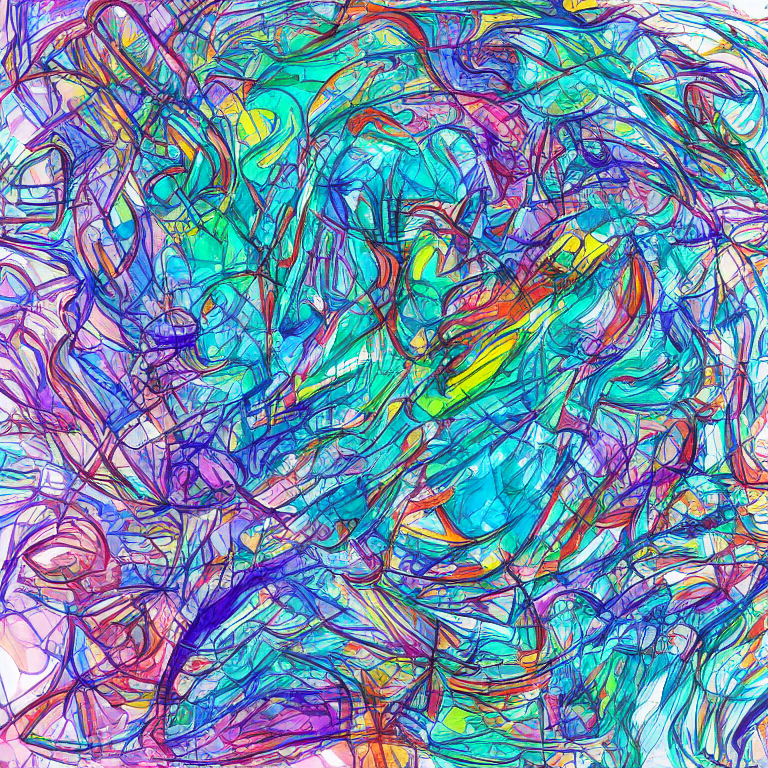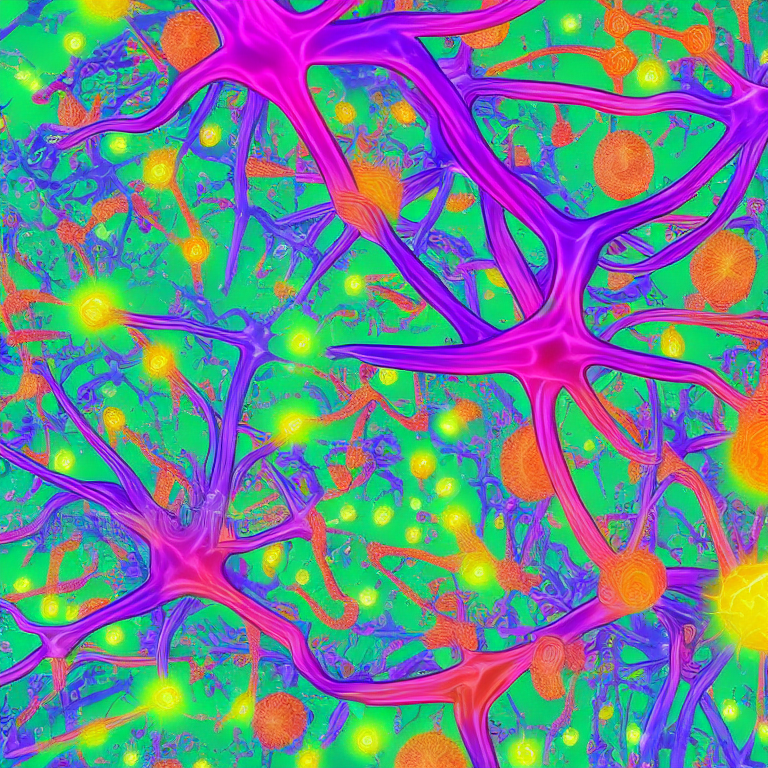Stimulants are substances that increase the activity of the central nervous system (CNS), leading to increased alertness, attention, focus, and energy. Examples of stimulants include caffeine, nicotine, cocaine, and amphetamines. Stimulants cause changes in the brain chemistry that lead to dependence and when someone who has been using stimulants regularly stops taking them, they may experience withdrawal symptoms.
Withdrawal symptoms can vary depending on the specific stimulant used, the dose, and the duration of use. We will take a closer look at the withdrawal symptoms of stimulants below, but for now we will briefly focus on the features of dependence that are characteristic of this group of substances.
About Stimulant Addiction

Stimulant addiction is a chronic brain condition that results from repeated use of stimulant drugs. We discussed the general patterns of addiction development in the article Our Reward System and Addiction.
Most stimulant drugs increase levels of dopamine, a neurotransmitter that is involved in feelings of pleasure and reward. Repeated use of stimulants can cause changes in the brain’s reward system. Over time, the brain becomes dependent on the drug, and individuals may experience withdrawal symptoms if they stop using the substance.
There are some features of dependence on stimulants that distinguish it from other classes of substances.
Rapid onset of tolerance
Tolerance is the process by which the body becomes less sensitive to the effects of a substance over time, leading to a need for higher doses to achieve the same effects. With stimulants, tolerance can develop quickly, often within just a few days of regular use. This can lead to a cycle of escalating use, which can increase the risk of addiction.
Intense psychological dependence
Stimulants can produce feelings of euphoria, confidence, and increased energy, which can be highly reinforcing and lead to cravings for the drug. Unlike other classes of substances, such as opioids or sedatives, which may be primarily used for pain relief or relaxation, stimulants are often used for their mood-enhancing properties.
Physicals
Stimulant dependence can also have physical effects, such as weight loss, insomnia, and cardiovascular problems. These physical effects can contribute to a range of health problems and complications, particularly with long-term use.
Challenging withdrawal
Stimulants withdrawal that ca be potentially dangerous. The withdrawal symptoms associated with stimulants, such as depression, anxiety, and intense cravings, can be particularly difficult to manage, and may require professional medical intervention to manage safely.
Overall, dependence on stimulants shares some features with other classes of substances, such as the risk of tolerance and addiction. However, a wide range of stimulating substances and the peculiarities of their effect on the brain create a separate difficult-to-predict scenario that everyone can face.
Stimulant Withdrawal Signs and Symptoms

So, we know that the brain’s dependence on stimulants is a consequence of their repeated use with the subsequent development of tolerance. What happens to a person in such a state when they interrupt the flow of the stimulator into the brain that caused these changes?
The key signs of withdrawal from stimulants include:
Fatigue and decreased energy. Stimulants artificially boost alertness and mood. When stopped, the brain has to readjust to normal arousal and energy levels, leading to feelings of tiredness, lack of motivation, and even mild depression.
Irritability and mood changes. Stimulants impact mood regulation in the brain. Withdrawal can lead to irritability, mood swings, anxiety, and difficulty controlling emotions.
Sleep problems. Both excessive sleepiness, insomnia or hypersomnia (excessive sleepiness) can occur. The brain has to rebalance its sleep-wake cycle, which can take days or weeks.
Headache. Stimulants cause changes in blood flow in the brain. Withdrawal often leads to nagging headaches as the brain vasculature readjusts.
Cognitive difficulties: Concentration and memory may be impaired during withdrawal, making it difficult to think clearly and focus.
Craving for the stimulant. Dopamine levels drop when stimulants are stopped, leading to intense cravings to take the stimulant again to boost mood and reward pathways in the brain.
Physiological manifestations. Increased appetite, Tremors or shaking, Muscle pain or stiffness, Nausea or vomiting.
In some cases, withdrawal from stimulants can also cause more severe symptoms, such as hallucinations, paranoia, and suicidal thoughts…
Mechanisms of Stimulants Withdrawal Symptoms

The mechanisms of withdrawal symptoms are complex and can involve a range of neurochemical and physiological changes in the brain and body. When a person stops using stimulants, the brain, and body may struggle to adjust to the sudden absence of the drug, leading to a variety of withdrawal symptoms. I would single out three main directions that explain what happens to the body when stimulants are canceled.
One key factor in withdrawal symptoms of CNS stimulants is the depletion of neurotransmitters, such as dopamine and norepinephrine, in the brain. Stimulants work by increasing the levels of these neurotransmitters, leading to feelings of euphoria and increased energy. However, with prolonged use, the brain may adapt by reducing the number of receptors for these neurotransmitters, and reducing the overall levels of neurotransmitters in the brain. When a person stops using stimulants, this can lead to a sudden drop in neurotransmitter levels, contributing to withdrawal symptoms such as depression, fatigue, and decreased energy.
Another factor in stimulant withdrawal is the activation of stress pathways in the body, such as the hypothalamic-pituitary-adrenal (HPA) axis. Stimulant use can lead to increased levels of stress hormones, such as cortisol, which can activate the stress response in the body. When a person stops using stimulants, the stress response may become dysregulated, contributing to symptoms such as anxiety, irritability, and insomnia.
In addition, stimulant use can affect the structure and function of the brain, particularly in areas related to reward and motivation. Chronic stimulant use can lead to changes in the way these areas of the brain function, contributing to addiction and withdrawal symptoms. For example, stimulant use can lead to reduced grey matter volume in the prefrontal cortex, a brain region involved in decision-making and impulse control.
Understanding these mechanisms can help guide effective treatment and management strategies for individuals experiencing withdrawal from stimulants.
Stages of Stimulant Withdrawal Timeline

Stimulant withdrawal can be a challenging process, and the timeline of withdrawal symptoms can vary depending on the individual and the specific drug involved. However, here is a general timeline and approach that may be used to alleviate stimulant withdrawal:
Days 1-3. Crash
The crash phase typically occurs within a few days of discontinuing stimulant use. During this stage, individuals may experience symptoms such as fatigue, depression, and increased appetite. They may also experience intense cravings for the drug.
It is important to stay hydrated, eat healthy foods, and get plenty of rest during this time. Medications such as benzodiazepines may be used to manage anxiety, agitation, and other symptoms.
Days 4-14. Acute withdrawal
The acute withdrawal phase can last for several weeks and involves a range of physical and psychological symptoms, including insomnia, irritability, anxiety, and decreased energy. Individuals may also experience physical symptoms such as muscle aches, tremors, and nausea.
Medications such as tranquilizers, sedatives and and mood stabilizers (not antidepressants) may be used to manage symptoms. Non-opioid pain relievers can be used to manage physical symptoms.
Days 15 and beyond. Protracted withdrawal
The protracted withdrawal phase can last for several months and may involve ongoing symptoms such as depression, anxiety, and fatigue. Individuals may also experience cravings for the drug during this stage.
Supportive therapy, such as cognitive-behavioral therapy (CBT) or motivational interviewing, can be helpful at this stage. It’s important to note that medical professionals should oversee the management of stimulant withdrawal, particularly for individuals with severe addiction or underlying medical conditions.
Post-acute withdrawal syndrome (PAWS) can occur, where withdrawal symptoms persist or come and go for weeks or months after quitting. This is caused by long-lasting changes in the brain due to chronic stimulant use. It requires ongoing coping strategies and support.
Treatment may include medication-assisted treatment, behavioral therapy, and support groups. The choice of approach may depend on the individual’s specific needs, the severity of their addiction, and any underlying medical or mental health conditions.
It’s important to note that withdrawal from stimulants can be intense and potentially dangerous, particularly for individuals with severe addiction or underlying medical conditions. Seeking professional help for detoxification and withdrawal management is strongly recommended. Medical professionals can provide support, medication, and other treatments to help individuals safely manage the symptoms of withdrawal and transition into recovery.
Specificities of some stimulants
Caffeine withdrawal usually peaks 1-2 days after stopping and lasts 2-9 days. Headache, fatigue, and irritability are common. Gradually cutting back caffeine intake over weeks can minimize symptoms.
Nicotine withdrawal from smoking/vaping/chewing tobacco causes cravings, irritability, difficulty concentrating, restlessness, and weight gain. It peaks 2-3 days after quitting and lasts 2-4 weeks. Nicotine replacements like gum or patches, medications, counseling, and support groups can help.
Amphetamine (like Adderall) withdrawal can be severe and last for weeks. Excessive sleeping, extreme hunger, deep depression, suicidal thoughts, psychosis, and paranoia may occur in heavy users. Medical detox is often needed with anti-anxiety and in some cases antidepressant medications to manage symptoms.
Cocaine withdrawal may last for months and frequently leads to relapse without treatment and lifestyle changes.
Methamphetamine withdrawal can be dangerous, even life-threatening without medical care. Sedatives and antipsychotics are often needed to handle the anxiety, psychosis, hallucinations, and mental health effects during detox. Months of treatment and sobriety are required to recover mental and physical health.
Overcoming Withdrawal and Recovery

- Taper off the stimulant. To alleviate withdrawal symptoms, it is best to gradually reduce stimulant use under medical guidance. If possible, of course. A dosage tapering should be purposeful and constant, otherwise it will take a person into the usual patterns of use and the goal to destroy the established neuronal-behavioral cycle of addiction will remain unattainable.
At any stage of withdrawal of stimulants, and other substances, the following aspects of life should be a constant. They may sound very corny, but people very often underestimate the usefulness of banal, but permanent habits and solutions.
- Stay hydrated and maintain a healthy diet. Proper hydration and nutrition can help the body recover and reduce the severity of withdrawal symptoms.
- Establish a sleep routine. Prioritizing sleep and maintaining a consistent sleep schedule can help regulate the body’s sleep patterns.
- Exercise. Engaging in careful regular physical activity can help alleviate mood-related symptoms and improve overall well-being. There is no need to set records, just give the body at least some activity, do exercises, do yoga, hiking, outdoor activities.
- Seek support. Connecting with friends, family, or support groups can provide emotional support and encouragement during the withdrawal process. Success rates are higher when a person has strong motivation and a solid support system. Recovery from stimulant addiction is challenging, so a person needs good reasons to quit and people who can offer help and encouragement for the long run.
- Consult a healthcare professional. They can help create a personalized plan to manage withdrawal symptoms and provide medical supervision if needed.
- Reducing stress and avoiding alcohol/other drugs is also important. All of the above should remain in the past for the duration of the recovery. These things and the situations they accompany directly and indirectly are powerful triggers for relapse.
Relapse is common, especially in the first 6-12 months after quitting stimulants. Cravings, triggers, and moderate withdrawal symptoms continue to challenge people in recovery. Lifestyle changes, accountability, and learning coping strategies can help prevent relapse.
Recovery is a lifelong process. While acute and post-acute withdrawal symptoms fade over time, the brain remains especially sensitive to stimulant effects and prone to addiction relapse. Ongoing vigilance and sobriety maintenance are required. The best approach is patience, self-care, and seeking counseling or medical support if severe symptoms occur.
Conclusion

In conclusion, withdrawal from stimulants can be a challenging and potentially dangerous process, characterized by a range of physical and psychological symptoms that can last for days, months, or eve more.
Fortunately, recovery from stimulant addiction is possible. There are a variety of approaches that can be used to alleviate the symptoms of stimulant withdrawal, including medication-assisted treatment, behavioral therapy, and supportive therapy. With the right mindset, knowledge and supprort, people in trouble can manage withdrawal symptoms, develop strategies for preventing relapse, and overcome addiction. The key message is all that requires patience, persistence, and a holistic approach to healing both the body and the brain.
But over time, people do heal and the brain is remarkably capable of rebalancing itself. The rewarding effects of being free from stimulant dependence makes the difficult process worthwhile. With time and dedication, recovery is absolutely possible. Help and hope do exist.
✔️
This marks the finish of today’s session. It is my hope that this piece was enlightening.
If you desire to advance the growth of this blog, I suggest the following actions:
- Subscribe to our social networks
- Circulate a link to this article among your associates.
- Give recognition to this blog on relevant platforms or discussion groups.
Should you identify any necessary additions or corrections in this article, feel free to initiate a dialogue with me via Contact Form.
I am always open to communication.
I appreciate your valuable time and consideration ⚡





I think this is one of the most vital info for me. And i’m glad reading your article. Good job, cheers
Pretty! This waas an extremey wonderrful article. Thanks forr providing this info.
Thanks, I’ve been looking for this for a long time!
Thanks, +
very good!!
Thanks for the post!